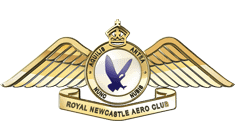Menu

The RPL is a licence that authorises pilots to fly in light, single-engine aircraft as the pilot in command in private operations. If you have an RPL you will be able to fly without supervision from a flight instructor or flying school.
There is no limitation on when you can start learning to fly when accompanied by a flight instructor; however you must be at least 15 years old to fly solo and you may not attempt the flight test until you are 16 years old.
The Civil Aviation Safety Authority (CASA) does not require any person undertaking flight training to hold formal educational qualifications, however basic literacy and numeracy is required.
In order to go solo and then use your RPL you will need to meet one of 2 medical standards. Either the Class 2 Medical Certificate issued by the Civil Aviation Safety Authority, or the Recreational Aviation Medical Certificate (RAMPC) issued by your GP. The medical standard you choose will affect what you can do with your RPL.
The first step is to complete a Trial Instructional Flight. This flight is an introduction and will help you decide if flying is for you. You will then complete basic handling training, complete a theory exam, learn how to take off and land, and deal with basic emergencies. Once you reach an appropriate standard your instructor will send you for your first solo flight. In this flight you take-off, go once around the “circuit”, and land again. Your next step is to complete further handling training, further emergency situation training, learn the area you are allowed to fly in, and how to depart and enter the aerodrome’s airspace. Once you have completed this training, demonstrate you are at the appropriate standard, and pass another theory exam, you will be allowed to fly solo in the training area. Finally, you will complete the training syllabus to the standard required for issue of the licence, sit a final theory examination, sit a recommendation flight and then be assessed by a Pilot Examiner for the issue of your licence.
The minimum legislative requirement to gain a Recreational Pilot Licence is 25 hours; however you also need to meet a required standard. The average person will normally achieve the required standard between 30 and 40 hours of flying training. The amount of hours required to meet the standard will vary with each individual and also depends on how often one flies. If you undertake to fly at least once a week, you could achieve your RPL in 1 year.
RNAC conducts RPL training in the American built Cessna 152, the most popular training aeroplane in the world. It is possible to train for your RPL in a larger aeroplane, and sometimes it will be necessary for comfort and quality of training as well as maximum take-off weight requirements. Please see the attached price list for hourly rates.
RPL allows a person to fly as the pilot in command of a single engine, single pilot certified aeroplane with a maximum take off weight of not more than 1500kg in private operations, at a distance of not more than 25 nautical miles from the aerodrome of origin.
The pilot may carry passengers, however the number of passengers is limited depending on which medical class they fall into. If the pilot holds a Class 2 Medical Certificate or higher, they may carry more than one passenger. If the pilot holds a RAMPC, they are limited to carrying only one passenger.
Endorsements for flight activities may be added onto the RPL. These flight activities include cross country navigation, flight in controlled airspace, flight at a controlled aerodrome, and activities such as aerobatics and formation flying.
A flight review is required once every 2 years, however in order to carry passengers you will need to have completed 3 take-offs and landings within the 90 days previous to the day you intend to carry them.

